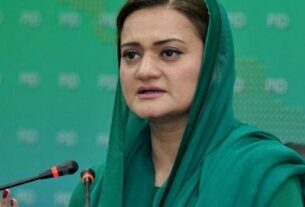1. Currency
Pakistan is introducing an important change in its currency system with the launch of plastic (polymer) banknotes. This move is a major step in modernizing the country’s banking system and is consistent with global trends in the handling of currencies. Pakistan only disclosed the use of plastic money to the IMF (International Monetary Fund) as a component of its broader economic strategy. Reducing the cost of money production, enhancing protection, and ultimately improving economic stability are the goals.
2. Adoption of Plastic Money Worldwide
Prior to delving into Pakistan’s shift to plastic money, it is imperative to comprehend the worldwide backdrop. With considerable success, nations including Canada, Australia, the Republic of New Zealand, and the UK are currently adopting plastic notes. This change has improved security, improved reliability, and reduced costs for these countries, among other advantages.
1. Polymer Notes’ Success in Australia
In 1988, Australia became the first nation to entirely transition to plastic money. Its experience acts as an example for other nations thinking about making similar change. Due to the polymer notes’ remarkable durability—they last a minimum of three times longer than ordinary paper notes—Australia has seen significant cost savings., These notes’ advanced safety features have greatly decreased faking.
2. The United Kingdom and Canada Adapt to fit
In the early 2010s, Canada and the UK adopted polymer notes, following Australia’s example. These nations had comparable advantages, including a substantial decrease in currency theft and extended note circulation. These achievements provide Pakistan with a way forward as it begins on its plastic money journey.
3. The Main Benefits of Pakistan’s Change to Plastic Money
Pakistan is going to receive numerous significant benefits once polymer notes are introduced. These benefits are vital to the government’s choice to implement this change, particularly in light of the long-term financial and economic advantages.
1. Stability and Economicality
The long-term value of plastic money is one of its biggest benefits. Compared with regular paper notes, polymer notes have a five-fold longer useful life. This continued use will save significant money in Pakistan, where wear and tear leads to a rather high currency rate of exchange. Plastic notes last longer, there are less reprints, which lowers the total cost of producing currency for the State Bank of Pakistan (SBP).
There will be a good environmental impact from this decrease in the demand for reprints. The environmental impact of generating paper notes is minimized over time by the decreased printing frequency of polymer notes, but producing polymer notes may initially demand more energy.
2. Better Safety Regulations
Plastic money is harder to counterfeit thanks to its numerous advanced security features. For Pakistan, where money that is fake has long been an issue, this is revolutionary. Among the characteristics of polymer notes are:
Holographic images transparent windows
Particular inks for tiny printing
These features make it nearly impossible to produce fake versions of the currency. The implementation of advanced security measures is vital for Pakistan’s financial system to maintain its reputation for fostering confidence and halting the circulation of counterfeit currency.
3. Long-term sustainability of the Environment
Polymer notes are generally more environmentally sustainable to plastic notes, regardless of the belief of some that plastic is bad for the environment. The notes use less resources to reprint because they are recyclable and have a longer useful life. When compared to paper currency, which usually ends up in garbage after a brief period of usage, this has a lower overall environmental impact.
4. Better Personal Hygiene
Plastic money has another, less talked about but significant benefit: it is hygienic. According to paper notes, polymer notes are more environmentally friendly and hygienic since they are unable to absorb moisture and pollutants. In the post-pandemic world, where sanitation and public health are major concerns, this is particularly important.
4.Pakistan’s Plan for Introducing Plastic Money
Pakistan is taking time to make changes to plastic money. To ensure an effortless adoption, the government has created an organized strategy in coordination with the SBP. Trial periods, public awareness efforts, and close cooperation with banks are all part of this plan.
1. Trial Stage: Analyzing Plastic Money
A limited usage of notes made of polymers is the first stage of the transition. There will be paper and plastic notes in use during this testing period. This allows the State Bank of Pakistan to obtain input from the general people to measure how effectively the plastic notes function in real life situations. The governing authority can make the necessary modifications in light of this feedback before committing to the use of plastic money entirely.
2. Training and Public Awareness
Training people about the advantages of plastic money is an important part of the transition technique. The government is informing the people about the new currency through a national public awareness program. This consists of:
a.media such as television and radio commercials
b.Announcements for the general public
c. advertisements with information
d. Bank training
Encouraging people to know about the protective features of polymer currency and how to tell authentic notes from fakes is the aim.
3. Cooperation with Banks
Collaboration with banks is a vital component of the shift. Specialized training is being given to banking and other financial institutions to assist them in managing the new currency. The main objectives of this course are to handle the polymer notes, recognize security characteristics, and update their systems for adding the new money into account.
5. The difficulties Pakistan Faces in Changing to Plastic Money
Although there are many advantages to plastic money, Pakistan will face difficulties when switching to polymer notes. These difficulties mostly have to do with getting public acceptability, paying for initial production, and making infrastructure modifications.
1. Production’s initial costs
Compared to paper notes, the initial cost of creating polymer notes is higher. This is because the production process used utilized more advanced materials and technologies. it is believed that these initial expenses will be overcome by the long-term cost decreases from reduced reprinting requirements. The public has been informed by the SBP that the transformation will ultimately result in financial savings; but, in order to prevent opposition from the public, this message needs to be properly communicated.
2. Acceptation of Plastic Money by the Public
Introducing new types of currency constantly faces the issue of gaining public acceptability. Appealing to Pakistanis, who are used to paper money, to accept polymer notes can take some time. This explains the significance of the government’s public awareness effort. Government may facilitate the transition by informing citizens about the advantages of plastic currency and resolving their worries.
3. Modifications to Logistics
The nation’s financial system will need to undergo logistical changes in order to transition to polymer notes. Updates are required for cash registers, ATMs, and vending machines to accommodate the new notes. In order to accept polymer notes, institutions will also need to alter their software systems. Although there will be a large upfront investment, these infrastructural modifications are essential.
6. Pakistan’s Plastic Money’s Economic Impact
It is believed that Pakistan will have major financial effects from the adoption of plastic money. Polymer currency is expected to decrease the cost of creating new notes, increase investor trust, reduce copying, and secure the nation’s financial system.
1. Economic Performance and Cost Savings
As was already mentioned, the government will save millions of rupees in production costs because plastic currency will require less reprints due to its long life. These savings could be used for social welfare and infrastructure development, among other economic sectors.
The financial system will stabilize as less fake currency is used. In an economy, the circulation of fake currencies has the potential to lead to inflation and depreciate real currency.
2. Increasing Trust Among Investors
For foreign investors, the beginning of plastic money encouraging news. It shows Pakistan’s commitment to getting its banking system up to date and dealing with ongoing challenges like faking. The International Monetary Fund has already assisted Pakistan’s decision, emphasizing the polymer notes’ long-term economic advantages.
Pakistan plans to bring in more international investment with a more safe and effective monetary system, especially in fields like commerce and technology. The enhanced trust among investors help to enhance Pakistan’s credit rating, which improve its access to foreign loans and financial assistance.
3. Minimizing Fake Money
As was already mentioned, Pakistan has long struggled with faking. It is expected that the launch of plastic notes with advanced safety features will significantly cut down on the amount of duplicate money in circulation. In spite of preserving Pakistan’s financial system’s integrity, this would raise public confidence in the country’s currency.
7. The IMF’s Involvement in Pakistan’s Currency Change
The transition of Pakistan to plastic money has been greatly supported by the International Monetary Fund’s (IMF). The IMF welcomed Pakistan’s move in a special briefing, pointing out that it is consistent with global trends toward currency reform. The possible long-term economic advantages of polymer notes, especially in regards to cost savings and safety, were also emphasized by the IMF.
1. The Financial Modernization Supported by the IMF
The IMF has always supported arising nations’ financial reform. The IMF is helping Pakistan in securing its financial system to improve economic stability by facilitating the country’s shift to plastic money. This help takes the kind of financial resources, policy suggestions, and technical assistance.
2. The stability of the Economy large Time
The announcement that the IMF has approved Pakistan’s currency transition is important because it informs the world’s financial industry that Pakistan is moving in the right direction. Through the introduction of Digital currency management techniques, Pakistan is establishing its nation as a more trustworthy and secure participant in the global financial system.




